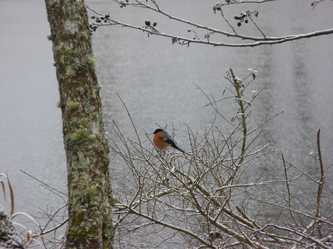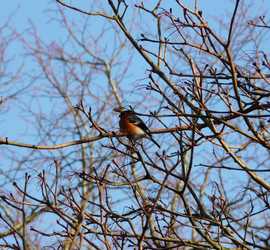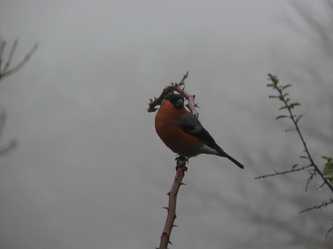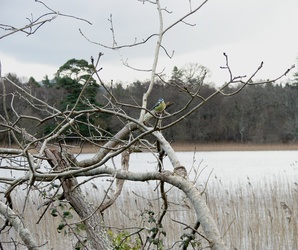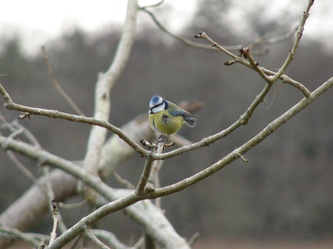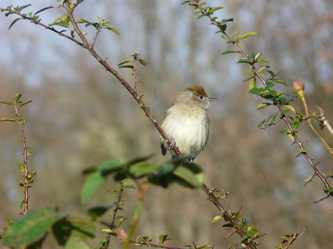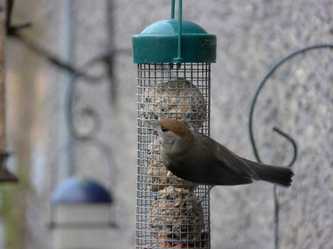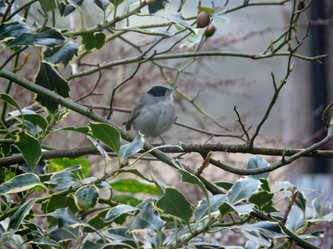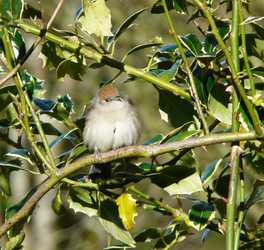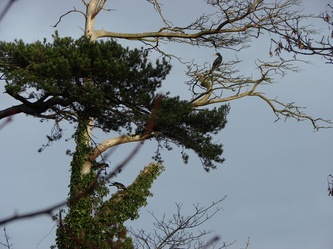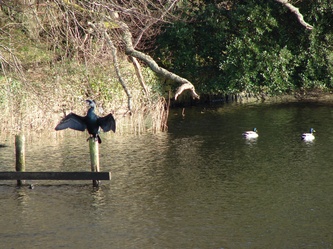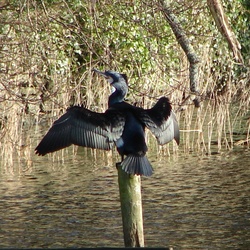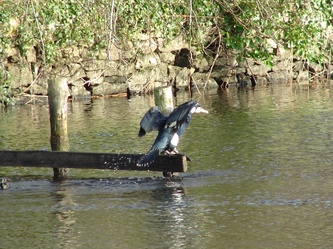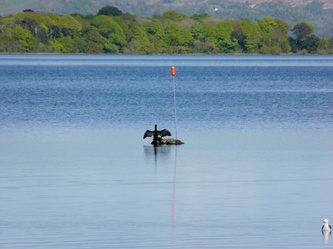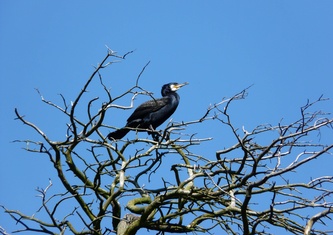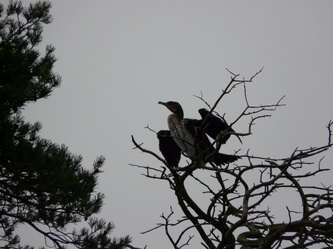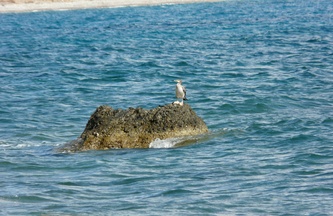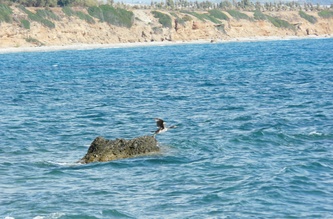Birds
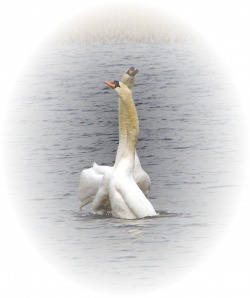
I think the title says it all. I appreciate that some of the images are not great and I would apologise; but would be insincere about it if i did .... so it's best if I dont.
Most of the information regarding the birds featured here is taken from the following books: 1) Collins, Bird Guide 2001edition. Excellent Book. 2) Birds of Ireland Facts, Folklore & History by Glynn Anderson. Definitely the most interesting book on birds I have ever read (Thank you Mary for the gift).
The image to the left was taken on the 3rd April 2008 at 12.21 (digital photography and its memory is great) from the banks of the Garavogue river at the beginning of Doorly Park. I think the caption 'Love is....' would suit, It is usually toward the end of the mating ritual when the Mute Swans entwine their necks.
Regarding the catorgies below: I do not intend uploading them in any particular order. If I do have any errors regarding information please feel free to leave a comment (see left side bar) with the correct details.
Most of the information regarding the birds featured here is taken from the following books: 1) Collins, Bird Guide 2001edition. Excellent Book. 2) Birds of Ireland Facts, Folklore & History by Glynn Anderson. Definitely the most interesting book on birds I have ever read (Thank you Mary for the gift).
The image to the left was taken on the 3rd April 2008 at 12.21 (digital photography and its memory is great) from the banks of the Garavogue river at the beginning of Doorly Park. I think the caption 'Love is....' would suit, It is usually toward the end of the mating ritual when the Mute Swans entwine their necks.
Regarding the catorgies below: I do not intend uploading them in any particular order. If I do have any errors regarding information please feel free to leave a comment (see left side bar) with the correct details.
Bluetit
A common Irish garden bird, the Bluetit was known as the early morning milk thief, he was renowned for piercing the top foil of the milk bottle and enjoying the cream. Both male and female look alike; blue cap, white face, greenish upperpart and yellow underparts. During the winter months you will see them flocking and feeding with Great and Longtailed Tits.
In ancient times the call of the Bluetit was said to herald bad weather.
Names in Gaelic include;
Cailleach chinn ghuirm....blue headed hag or cock
Diarmaid beag................little Dermot
In ancient times the call of the Bluetit was said to herald bad weather.
Names in Gaelic include;
Cailleach chinn ghuirm....blue headed hag or cock
Diarmaid beag................little Dermot
Blackcap
I like this fellow or lassie. The male has the black cap and grey body that goes browner later in the season while the female has the bright brown cap grey collar and olive brown body. They have unusual habits in that they were for centuries summer visitors to Ireland and Britain and wintered in the Mediterranean (where unfortunately for them on some island they are considered a delicacy). Many now stay throughout the year while others make there way over here for the winter from central europe (they are obviously checking out the rumours going round that with climate change Cork is said to be the next Cost del Sunshine within the next few years). During the winter months they have a tendancy to dominate bird tables and feeders and bully the smaller birds; it is not just the smaller birds they harass, constantly over the 2009 / 2010 winter we watched this Orvil looking female seen below in the first and last photographs take on all comers; Great tits, Chaffinches, a Field Mouse and several Sparrows at a time.
They are known, with the Sedge Warblers, as the Irish Nightingales, and are regarded by many as the sweetest singers in Ireland.
They have several names in Gaelic:
Caipin dubh.......Black cap
Bod na dtor.......Bush vagrant
Mairin an triubhais / truis........Maureen with the trousers (our Orvil was definitely a Maureen)
Sean an chaipin...............John or Sean of the cap
They are known, with the Sedge Warblers, as the Irish Nightingales, and are regarded by many as the sweetest singers in Ireland.
They have several names in Gaelic:
Caipin dubh.......Black cap
Bod na dtor.......Bush vagrant
Mairin an triubhais / truis........Maureen with the trousers (our Orvil was definitely a Maureen)
Sean an chaipin...............John or Sean of the cap
CORMORANT & SHAG
With the exception of the last two images all were taken on the Garavogue river in Sligo and Lough Gill. I love spotting and watching them, it is their primeval look that I find fascinating. Regarding the second image: One Mallard is saying to the other "Ignore him, he always exaggerates the size of the ones that get away".
The last two images were taken on the south coast of Crete in 2008 midway between the villages of Agia Galini and Kokkinos Pirgos. I believe it to be a year old Shag, I was watching this one for approximately 20 minutes and he did appear smaller than the Cormorants, I may be wrong.
Diving fish eaters, they usually nest on cliffs but also can be found in trees, eventually their droppings have being known to kill these trees. Numbers appear to be on the up according to recently published literature (27/10/2009). When spreading their wings, as some are below, it is to dry their wings after swimming. The Irish name for them is Fiach Mara meaning Sea Raven.
With the exception of the last two images all were taken on the Garavogue river in Sligo and Lough Gill. I love spotting and watching them, it is their primeval look that I find fascinating. Regarding the second image: One Mallard is saying to the other "Ignore him, he always exaggerates the size of the ones that get away".
The last two images were taken on the south coast of Crete in 2008 midway between the villages of Agia Galini and Kokkinos Pirgos. I believe it to be a year old Shag, I was watching this one for approximately 20 minutes and he did appear smaller than the Cormorants, I may be wrong.
Diving fish eaters, they usually nest on cliffs but also can be found in trees, eventually their droppings have being known to kill these trees. Numbers appear to be on the up according to recently published literature (27/10/2009). When spreading their wings, as some are below, it is to dry their wings after swimming. The Irish name for them is Fiach Mara meaning Sea Raven.
